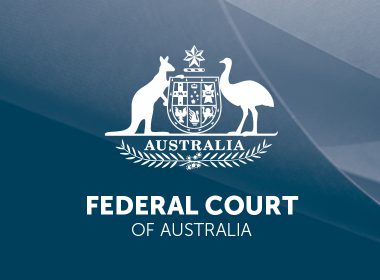Key decisions
- HDI Global Specialty SE v Wonkana No. 3 Pty Ltd [2020] NSWCA 296
- Vickery v The Owners – Strata Plan No. 80412 [2020] NSWCA 284
- Bandelle Pty Ltd v Sydney Capitol Hotels Pty Ltd [2020] NSWCA 303
CONTRACTS
Contractual construction – where insurance policy includes reference to repealed legislation
HDI Global Specialty SE v Wonkana No. 3 Pty Ltd [2020] NSWCA 296 is a recent ‘test case’ about whether insurers can rely on a particular exclusion to deny business interruption claims for loss caused by COVID-19.
Due to its significance, the matter was heard by the NSW Court of Appeal (Bathurst CJ, Bell P, Meagher JA, Hammerschlag J and Ball J) pursuant to UCPR r 1.21(1)(b).
Background: HDI Global and The Hollard Insurance Company Pty Ltd (‘Insurers’) issued standard form policies of insurance for business interruption cover, including against the outbreak of certain infectious or contagious human diseases (‘Policies’). The Policies contained an exception that excluded cover in relation to any diseases declared to be quarantinable diseases under the Quarantine Act 1908 (Cth) and subsequent amendments (‘Exclusion Clause’).
In 2016, prior to issuing the Policies, the Quarantine Act was repealed and replaced by the Biosecurity Act 2015 (Cth). Although COVID-19 became a ‘listed human disease’ under the Biosecurity Act in January 2020, it had (unsurprisingly) never been declared a ‘quarantinable disease’ under the repealed Quarantine Act.
Insurers’ contentions: The Insurers argued that the reference to diseases declared to be ‘quarantinable diseases’ under the Quarantine Act should be construed as a reference to diseases determined to be ‘listed human diseases’ under the Biosecurity Act. They relied on two principal arguments:
- The words ‘and subsequent amendments’ encompass the repeal and replacement of the Quarantine Act with the Biosecurity Act.
- The reference to the Quarantine Act was an obvious mistake that would give rise to absurdity.
The Insurers did not rely on equitable rectification.
Decision: The Court of Appeal rejected both arguments.
As to the first argument, the Court held that the reference to ‘subsequent amendments’ was to be given its ordinary and unambiguous meaning, which did not extend to the repeal and replacement of the Quarantine Act with an entirely new Act.
The Court rejected the second argument based on orthodox principles of contractual construction (although the judgments differed in their reasoning).
Meagher JA and Ball J found the Insurers were not aware of the repeal of the Quarantine Act when drafting or issuing the Policies. Accordingly, the Court could have no regard to the fact of the repeal and thus there was no basis for identifying any relevant mistake in the language or expression of the Policies.
Hammerschlag J held that although the Exclusion Clause might have been drafted differently to make better commercial sense, it did not amount to a ‘clear mistake’ or rise to the level of ‘absurdity’.
Special leave application: The Insurance Council of Australia has announced that an application will be made for special leave to appeal to the High Court.
STRATA LAW
Obligation of owners corporation to maintain common property in good repair – breach of statutory duty – NCAT – powers and jurisdiction
In Vickery v The Owners – Strata Plan No. 80412 [2020] NSWCA 284, the Court (Basten JA and White JA, Leeming JA dissenting) held NCAT has power to award damages to a lot owner for breach of the duty to maintain and repair common property. The duty is imposed by s 106(1) of the Strata Schemes Management Act 2015 (NSW) (‘SSMA’). Under s 106(5), a lot owner may recover ‘as damages for breach of statutory duty’ any reasonably foreseeable loss. The issue in this case was the proper construction of s 232 of the SSMA, which provides that NCAT may ‘make an order to settle a complaint or dispute’. Did those words mean NCAT had the power to determine a claim for damages, and award damages?
The majority held NCAT does have the power to award damages to a lot owner against an owners corporation for breach of the duty. Their Honours, writing separately, considered that ‘an order to settle’ a dispute meant an order to resolve. They had regard to the fact that the statutory scheme contemplates disputes being dealt with wholly by either the Tribunal or the Court, whichever is first seized of jurisdiction. They also considered the legislative history supported this conclusion, though in different ways. Basten JA considered it significant that the same language (‘to settle disputes’) in a predecessor provision that did not mention damages had been left unchanged after a 1984 insertion of a different provision expressly conferring a limited power to award damages (the effect being to extend ‘settle’ to include the award of damages) (at [47]). His Honour reasoned that ‘settle’ therefore always extended to an award of damages (at [50]). Leeming JA disagreed (at [144]), placing weight on the fact that ‘settle’ did not confer a power to award damages until the 1984 insertion made it express. White JA (at [162]–[164]) placed weight on the fact that the current provisions were intended to overturn The Owners – Strata Plan 50276 v Thoo [2013] NSWCA 270, which held that lot owners did not have an action for damages for breach of the duty. Thoo had reasoned that there was no right to damages because SSMA exhausted the remedies for breach of the duty and yet an adjudicator (intended to settle such disputes) did not have the power to award damages. In other words, Thoo had turned on the express prohibition on award of damages. White JA thus concluded that the lack of such prohibition, after Thoo, was significant, and confirmed that ‘settle’ included to award damages. (Leeming JA disagreed (at [96]), treating the overturning of Thoo as a reason to disregard its reasoning altogether and to return instead to the status quo ante.)
In dissent, Leeming JA considered the ordinary meaning of the words ‘an order to settle a complaint or dispute’ was narrower than a power to resolve disputes and did not extend to awards of damages. Leeming JA considered that the legislative history ‘ultimately yield[ed] the answer to this appeal’ (at [116]) and, for various reasons, led to the conclusion that s 232 did not give NCAT the power to award damages for breach of the duty. The disagreements as to the significance, and the different treatment, of legislative history across the three judgments are striking; although, in the end, the majority and minority did differ on the approach to the text, in particular the width of the word ‘settle’ in the context.
BUILDING & CONSTRUCTION
Statutory construction – limitation period for actions arising out of defective building work more than ten years after completion of work
Bandelle Pty Ltd v Sydney Capitol Hotels Pty Ltd [2020] NSWCA 303, a case about a builder’s negligent work, raised another conundrum of statutory construction involving legislative history. Each Judge of Appeal (Leeming JA, White JA and Emmett AJA) reached a different view. The builder contended the action was time-barred under s 6.20 of the Environmental Planning and Assessment Act 1979 (‘EPAA’), which sets a 10-year long-stop time bar from the completion of building work. In 2019, s 6.20 had replaced a predecessor provision (s 109ZK) when the EPAA’s renumbering took effect. The previous bar was enacted in 1998. From its enactment, the bar had always been disapplied, by regulation, for building work done under a pre-1998 development consent. The work at issue in this case fell within that carve-out. In 2012, the regulation was repealed, by an omnibus Act repealing ‘redundant’ regulations.
The 2012 repeal of the regulation did not appear designed to alter the operation of the bar.
Emmett AJA held (White JA agreeing), that the 2012 repeal did not alter the operation of the bar; the bar remained subject to the carve-out despite the regulation’s repeal. That conclusion relied on s 30(1)(a) of the Interpretation Act 1987 (NSW), which provides that repeal of an Act or statutory rule does not revive anything not in force at the time of the repeal. As such, Emmett AJA and White JA held that the 2012 repeal did not revive the operation of the bar on pre-1998 building work. Leeming JA (at [27]), in dissent on this point, disagreed on that application of s 30(1)(a). Emmett AJA further held that the mere renumbering of the EPAA, also did not alter the operation of the bar, such that the carve-out still applied and the action was not barred. White JA disagreed, holding that the carve-out, though continuing after the regulation’s repeal, ceased upon the repeal of s 109ZK itself, even if s 109ZK was replaced by s 6.20 in similar (but not identical) language. Leeming JA held that the carve-out ceased upon the 2012 repeal. Even though that repeal was intended to be only of ‘redundant’ regulations (it had the heading ‘Repeal of redundant acts, instruments and provisions’), the fact of the repeal meant that the text of s 109ZK, and later s 6.20, simply answered the question.
In the result, by majority (Leeming and White JJA), the carve-out did not apply and the action was barred.
The case lends no support to the notion that each case has one right answer. Each of the conclusions in the three judgments can be described as dissatisfying for different reasons. Emmett AJA’s dissent, pursuing the thread of intention into the labyrinth of legislative history and back out again, perhaps best accorded with the notional intention of the legislature. Neither by the 2012 repeal nor by the EPAA renumbering did the legislature evince any clear design to change the fundamental operation of the bar, which, on any view, had operated subject to the carve-out for some 15 years. But giving full weight to intention led arguably to two unsatisfactory results: first, the need to master that labyrinth to reach that conclusion; and, secondly, that the plain language of s 6.20, which otherwise would have extended to the work, was subject to a fundamental but unexpressed carve-out nowhere referred to in the EPAA. That was a step too far for White JA, who had regard to the practical concern that statutes should mean what they say. But, in turn, the result of White JA’s conclusion was perhaps peculiar: the bar had operated subject to the carve-out for over 20 years (until 2019) but, by the mere renumbering of the EPAA – whose ‘principal purpose’ Leeming JA said was ‘essentially cosmetic’ (at [40]) – was altered to extend to pre-1998 work only in 2019, which on no view was the legislature’s intention. Likewise, Leeming JA’s conclusion that the carve-out had simply ceased applying to s 109ZK in 2012 by virtue of an omnibus repeal meant that a repeal designed merely to repeal redundant regulations had significantly changed a key provision of the EPAA.


Marcel Fernandes and James Braithwaite are barristers in 12th Floor Wentworth Selborne Chambers.


